2025 WAIC: Witnessing the Sweeping Panorama of the AI Era in Shanghai
![]() 08/01 2025
08/01 2025
![]() 489
489

If last year was marked by the 'Hundred Models War' for AI large models, this year is distinguished by the full-scale implementation of AI applications. You'll observe not only the augmentation of humans' 'external brains' but also AI extending its 'limbs,' walking onto streets, entering vehicles, and being integrated into mobile phones.
Author | Dou Dou
Produced by | Industry Entrepreneur
This year's World Artificial Intelligence Conference commenced amidst the hot and humid plum rain season. The weather was stifling, and the exhibition halls were even hotter, not just in temperature but also due to the myriad of cutting-edge technologies, products, and topics presented at this AI event.
The exhibition area of this year's conference surpassed 70,000 square meters, setting a new record. However, the halls were clearly zoned: Hall H1 focused on technology and large model platforms, Hall H2 on industry applications, and Hall H3 on various intelligent robots and terminal devices.
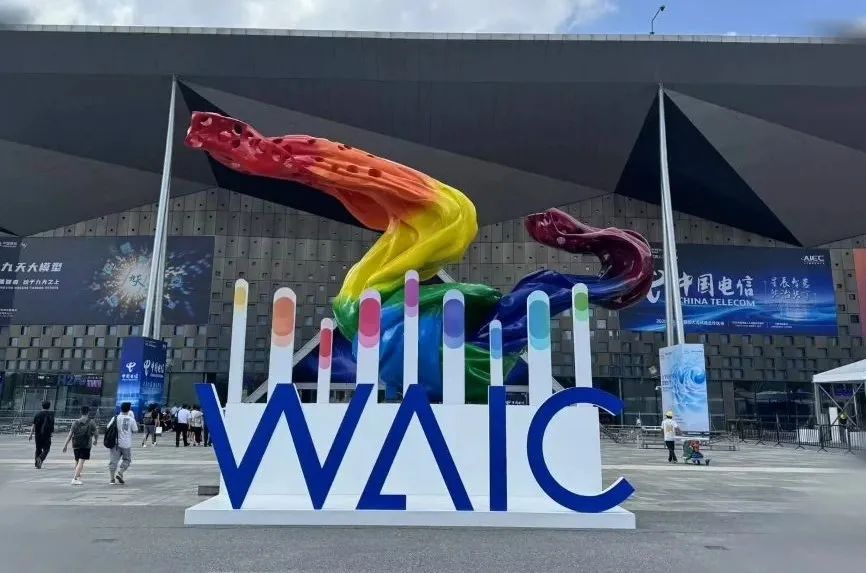
In essence, it traced a clear path from 'can it be done' to 'can it be used' to 'where can it be used.'
This was also the focal point of this year's exhibition: AI Implementation.
We found a definitive answer to this in the exhibition area.
We witnessed Tencent Cloud, JD Technology, Alibaba Cloud DingTalk, and Huawei Cloud presenting their respective large model platform solutions, emphasizing integration with business operations and collaboration within ecosystems.
Companies such as Runjian, Kingdee, Ronglian Qimo, and Qunhe Technology embedded AI into diverse enterprise application scenarios, making AI an integral part of business processes.
Robot companies like Unitree, Zhiyuan, and Qilang also showcased how AI enters the physical world, moving and serving people in real-world scenarios.
If previous WAICs were akin to talent shows for AI technology, this year was more like a competition of product capabilities and a roadshow of application implementations.
I. From 'Talking About Models' to 'Talking About Implementation'
From the perspective of Hall H1, the conference's core technology hall, large models remained the main protagonists, but the emphasis shifted from parameter scale to implementation capabilities.
First, let's delve into the model implementation strategies of platform-level vendors.
Tencent Cloud highlighted the multimodal capabilities of the Hunyuan large model and the Hunyuan development platform at the WAIC site. The Hunyuan model supports the understanding of various modalities such as text, images, and audio, and provides API interfaces and plugin management systems through the Hunyuan Hub platform, empowering industries like finance, media, retail, and education. Demonstrations in the exhibition area included financial analysis assistants, intelligent video editing, media content generation, and other Agent services, emphasizing the integrated capabilities of 'platform + plugins + private deployment.'
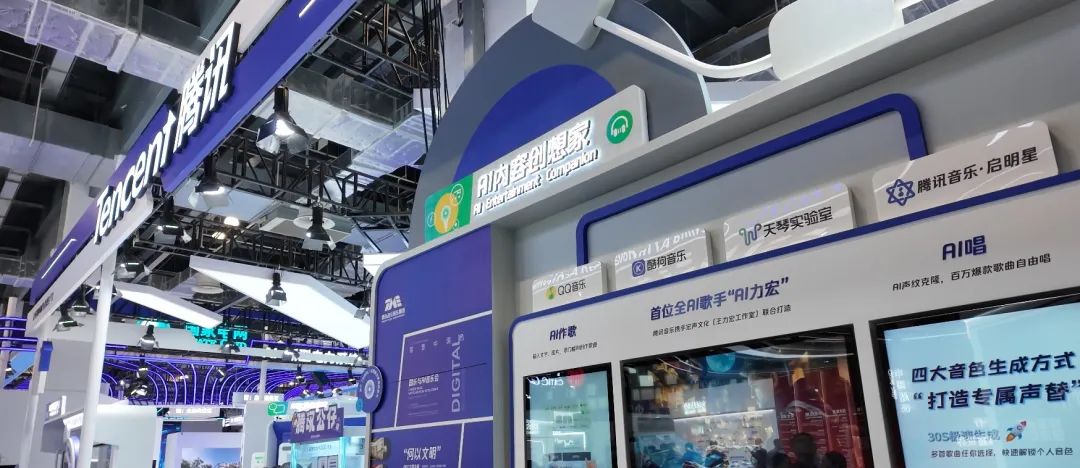
JD Technology centered on the implementation path of industrial intelligent agents and supply chain models. At the WAIC site, JD demonstrated how its intelligent supply chain system schedules inventory, predicts sales, and optimizes logistics processes through AI. Large models are not merely used for text interaction but are deeply embedded in business process nodes, becoming an integral part of the enterprise mid-tier.
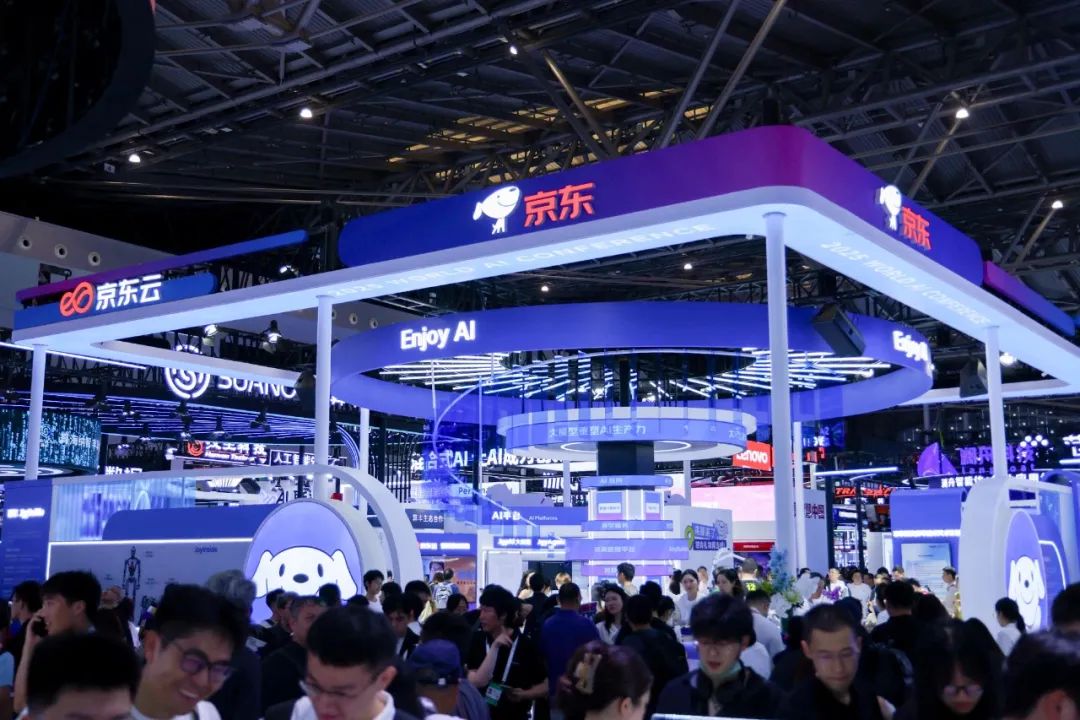
Alibaba Cloud DingTalk took the office intelligent agent as a breakthrough to build an ecosystem integration of 'Tongyi + DingTalk.' In the exhibition area, users only need to input requests in group chats, and the intelligent Agent can automatically generate project progress tables, meeting minutes, daily report summaries, and other documents, seamlessly connecting collaboration links through the system. Its Agent capabilities stem from the Tongyi Qianwen large model, with underlying integration of knowledge base management, permission control, and RPA capabilities, helping enterprises achieve 'process intelligence.'
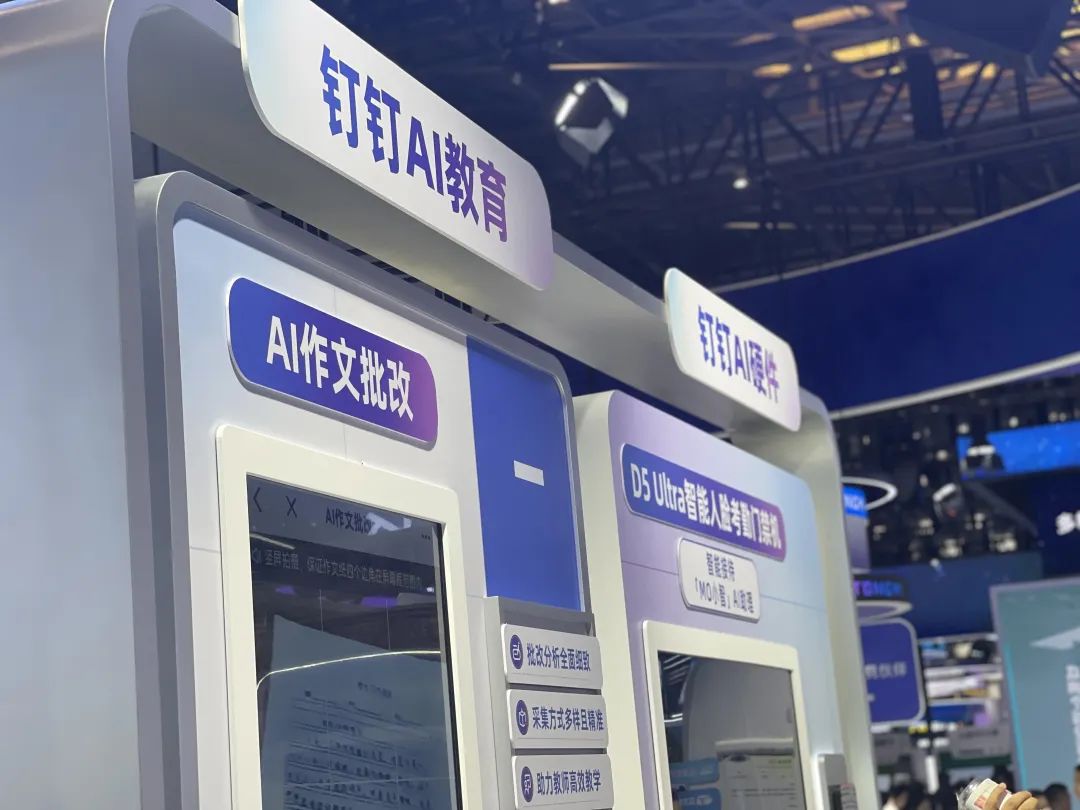
Huawei Cloud showcased the combined strengths of its 'PanGu large model + Ascend AI computing power.' It focused on demonstrating the deployment effects of PanGu in industries such as weather forecasting, coal mine safety, and industrial inspection. The on-site model platform supports Fine-tune and private deployment, enabling enterprises to build their own 'industry brain' based on PanGu. Ascend hardware ensures reasoning efficiency and security, providing a cornerstone for key industry deployments.
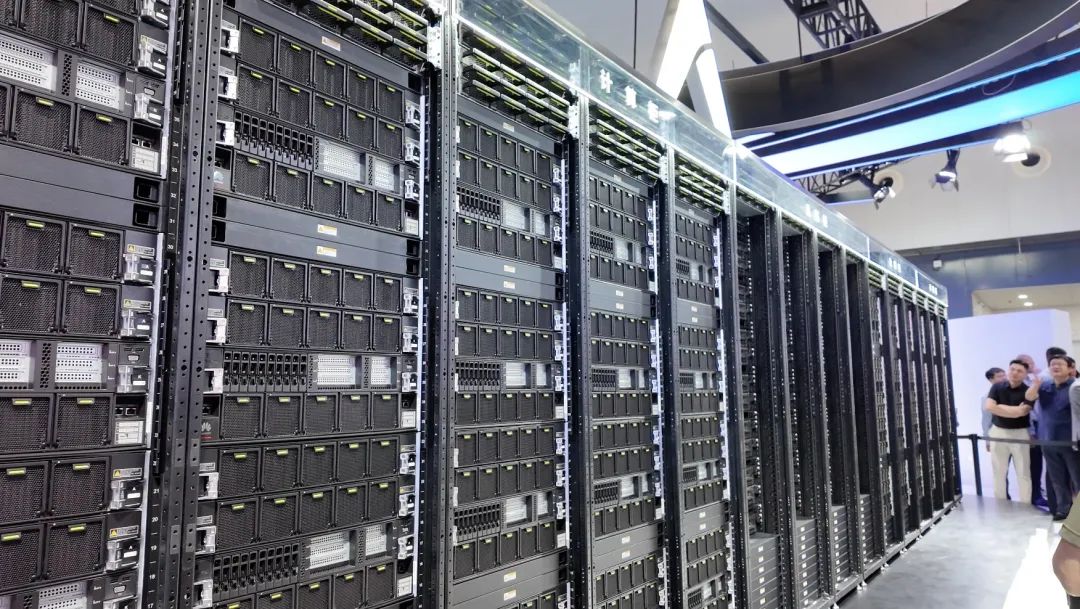
Next, let's examine the productization breakthroughs of model vendors.
At WAIC 2025, an increasing number of domestic model vendors are transitioning from parameter competition to scenario integration.
Zhipu AI launched the GLM full-series model implementation solution and brought the CogAgent platform, supporting users in training personalized dialogue entities and quickly encapsulating them as roles such as 'intelligent customer service' and 'content assistants.' The system supports private knowledge bases, invocation of multimodal APIs, and process customization.
Baichuan Intelligence exhibited Baichuan 4 and its Agent platform. It emphasized demonstrations of text-to-image/image-to-text dialogue assistants, government affairs approval automation tools, etc., supporting localized deployment and multi-industry plugin loading, helping medium-sized enterprises quickly access model capabilities.
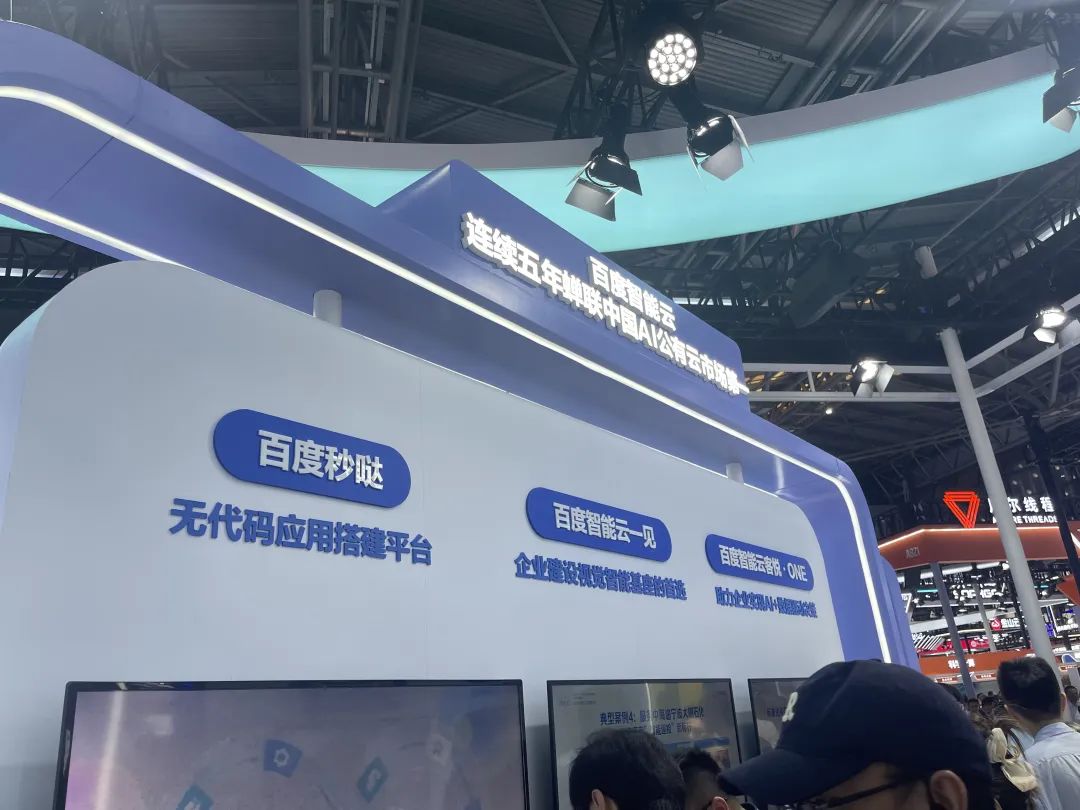
MiniMax showcased its new generation of general-purpose dialogue Agent system, characterized by low resource requirements for local deployment and support for integration with office systems such as DingTalk, Feishu, and WeChat Work, reflecting the transformation of model vendors towards lightweight scenario implementation.
Dark Side of the Moon mainly promoted its MoE (Mixture of Experts) architecture model and open API, supporting the invocation of module combinations to generate content, analyze data, and generate executable scripts. It demonstrated the integrated process of 'AI business writing + intelligent table analysis' on-site, showcasing the evolution of AI towards workplace toolization.
In fact, the shift from 'talking about models' to 'talking about implementation' by model vendors is both a strategic contraction and a pragmatic choice.
Amidst intensifying global AI computing power anxiety and continued technological competition between China and the United States, Chinese AI vendors are swiftly navigating through the 'plateau phase' and advancing the commercialization of large models with a product-centric mindset: questions such as whether it can run, who is using it, how to pay, and what ROI it brings are more crucial than the model itself.
We can comprehend that large models are no longer a general platform narrative but are packaged as various vertical capability carriers. Ultimately, where they land in the industry, what problems they solve, and what value they create will determine the winner of this AI competition.
II. From External Tools to System Reconstruction
The most notable new phenomenon at the 2025 WAIC was that a significant number of vendors began deeply integrating AI Agent capabilities into their own business processes, forming a new wave of native intelligent systems.
This is no longer about 'adding a large model API to an existing product' but directly reconstructing processes with large models + intelligent agents.
Runjian introduced the 'Quchi Intelligent Agent' platform, integrating computing power scheduling, large model capabilities, and industry knowledge bases. The on-site simulation of the communication operation and maintenance scenario revealed the intelligent agent automatically detecting base station anomalies, outputting reports, generating work orders, and even scheduling maintenance resources. The platform also supports multi-language dialogue, demonstrating the potential for AI implementation in the One Belt and Road cross-border business.
Ronglian Qimo focused on the 'Customer Service Intelligent Agent + Marketing AI Platform,' showcasing its Rongxi Agent system's automatic dialogue, emotion recognition, script recommendation, customer segmentation, and other process automation solutions in the manufacturing and government affairs industries. The system demonstrated support for text, voice, and video customer service on-site and can achieve 'thousands of faces' script output.
Qunhe Technology's SpatialVerse platform features semantic-driven 3D design generation. Users input style requirements and spatial information, and the system immediately outputs renderings and renovation design plans. Applied in real estate, home furnishing, real estate exhibition halls, etc., it has become a marketing tool for numerous decoration enterprises.
Kingdee showcased the integrated application of its Cangqiong Agent 2.0 in enterprise finance, budgeting, human resources, approval, and other scenarios. The exhibition area simulated users initiating budget deviation analysis in natural language, with the Agent instantly retrieving financial data, generating visual charts, and analysis suggestions.
Kuaishou Keling presented a text-to-video platform where users can input product selling points or copywriting to generate short video templates with accompanying images, voiceovers, and shot scripts, widely used in daily content production by e-commerce merchants, significantly enhancing content delivery efficiency.
BetteryeahAI provides a zero-code automation process platform where visitors can on-site construct processes such as 'customer inquiry - AI reply - workflow approval - system synchronization.' The platform connects systems like DingTalk and CRM, promoting low-threshold AI office automation for small and medium-sized enterprises.
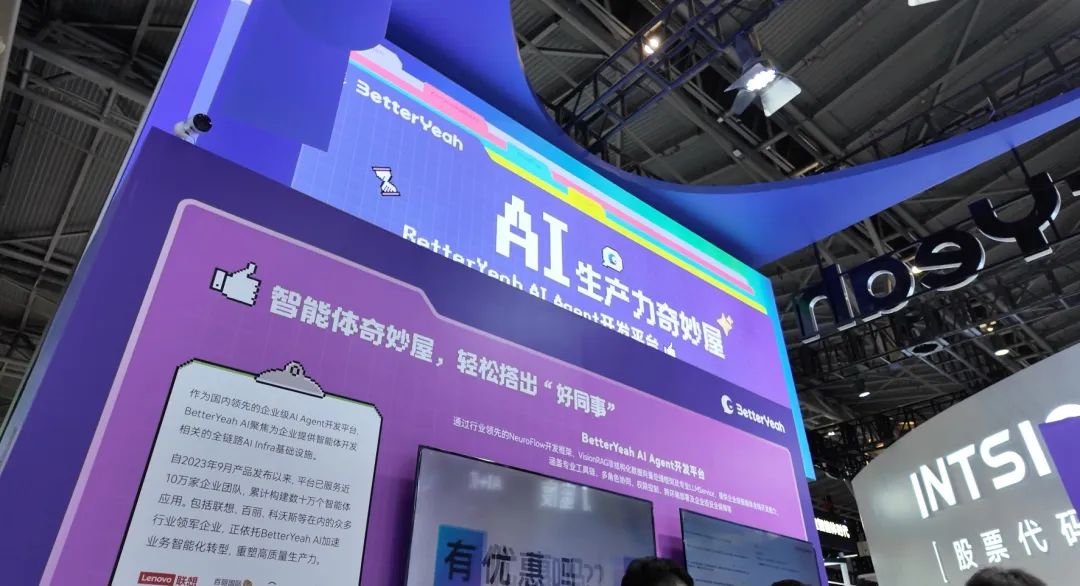
PPIO launched China's first Agentic AI infrastructure platform, introducing a secure and efficient Agent sandbox and multimodal model services to help enterprises efficiently build intelligent agent applications and promote large-scale Agent implementation.
NetEase Fuxi highlighted its AI synthetic anchors and intelligent sports analysis systems, serving education, media, and sports institutions. AI anchors can automatically generate explanatory videos, substantially reducing content costs.
These convey not just simple AI applications but the trend of AI being natively embedded into enterprise systems, processes, and data structures. We once viewed AI as an external tool added to the system. Now, it is beginning to become the core, determining how the system operates.
In a nutshell, AI is no longer an added bonus but the fundamental foundation.
This marks the entry of the AI industry into a new phase, not just which companies are doing AI but which companies are beginning to 'AI-ize.' Whoever can reconstruct processes with AI will occupy the dual high ground of efficiency and cognition.
III. Beginning to Handle the 'Weight' of the Industry
Another prominent change at this year's WAIC was the full participation of industry players, showcasing how AI serves various industries.
Specifically, Hall H2 focused on the four major application scenarios of 'smart cities, intelligent driving, new industrialization, and inclusive livelihood,' gathering global leading industry players such as China Mobile, China Unicom, Tesla, Siemens, Geely, and Lixiang, demonstrating how the AI industry chain deeply connects with the 'complexity of the real world.'
Urban governance, once a 'heavy scenario' difficult for AI to touch, has made breakthroughs this year.
Haixia Economic and Scientific Technology introduced the country's first hardware-independent AI data source platform, predicting urban waterlogging by integrating multi-source data and demonstrating risk early warning capabilities under high-frequency rainfall on-site.
China Tower's Jingwei large model sinks spatial data intelligent analysis capabilities to the block level, becoming the 'second brain' for responding to extreme weather and urban emergencies.
The AI meteorological model of the China Meteorological Administration refines forecast granularity to the hourly level, aiding urban disaster prevention and mitigation.
These cases show that AI is connecting to the city's 'nervous system,' not just managing cars and lights but also participating in risk judgment and real-time response.
In the industrial field, Siemens exhibited its AI scheduling solution for hydrogen energy factories, achieving unified intelligent management of power generation, energy storage, and operation and maintenance; Hollias brought the XMagital system, known as the 'operating system in the industrial field,' with simulation + control + optimization capabilities; CITIC Dicastal showcased its first 'lighthouse factory' in Africa, utilizing industrial large models for equipment interconnection, capacity scheduling, and remote maintenance.
Suochen Technology in the wind power industry combined AI with physical modeling to launch a physical AI wind power platform, maximizing power generation through semantic analysis and weather forecasting. New players such as Wudao AI, Xijing Technology, and Workshop Robots also showcased the implementation capabilities of AI in logistics, quality inspection, and automated workstations.
All this illustrates that AI can not only 'describe images' but also 'create objects from images.' The complexity of the industry, once a barrier for AI, is now gradually becoming a stage for AI to showcase its capabilities.
In summary, AI applications are evolving from auxiliary tools to industry infrastructure.
Our previous perception of AI was primarily as an efficiency enhancer, assisting with tasks like tagging, accelerating reviews, and generating content. However, AI now tackles more intricate challenges, aiding doctors in early lesion detection, enabling robots to collaborate with factory workers, and enhancing urban management. These are not trivial tasks; they necessitate AI's capability to shoulder the weight of various industries.
This shift signifies that the primary obstacles to AI implementation are no longer model capabilities but a profound understanding of industry expertise and system integration abilities.
IV. The Race for AI 'Embodiment' Entry Points Has Commenced
This year, robots and smart devices emerged as the quintessential symbols of embodied intelligence.
Particularly, the exhibition hall dedicated to humanoid robots garnered immense popularity.
Unitree Technology presented its humanoid robot, Unitree H1, capable of complex movements such as stable bipedal walking, jumping, and lifting, aimed at education, scientific research, and patrol scenarios. Integrated with AI visual recognition and speech understanding, it can engage in question-and-answer sessions and guided tours.
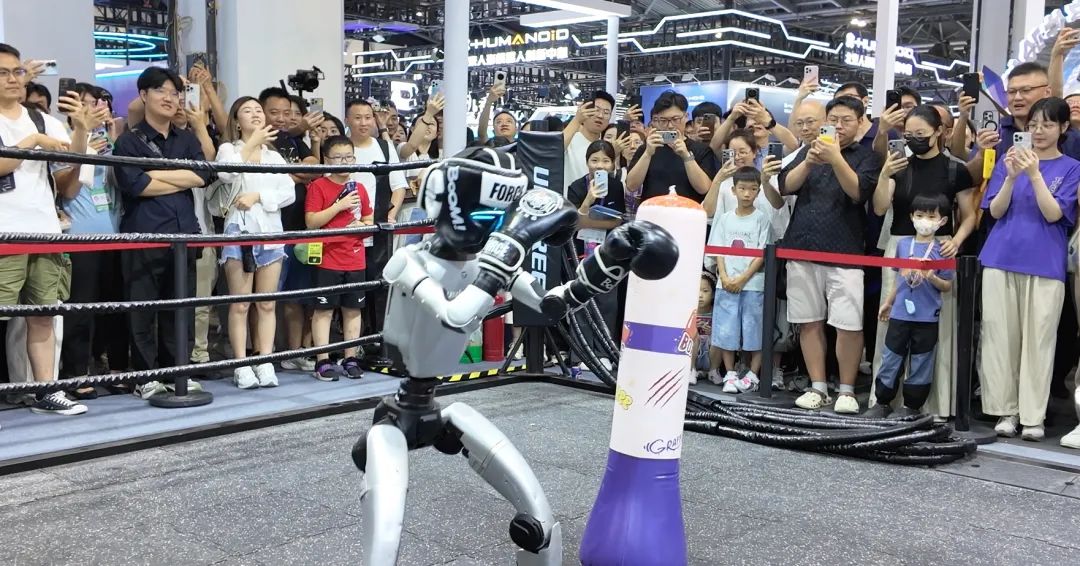
Zhiyuan Robotics exhibited the Xbot-L humanoid robot, capable of multi-degree-of-freedom coordinated control, natural language dialogue, and task execution, targeting commercial reception, exhibition hall guidance, and other applications.
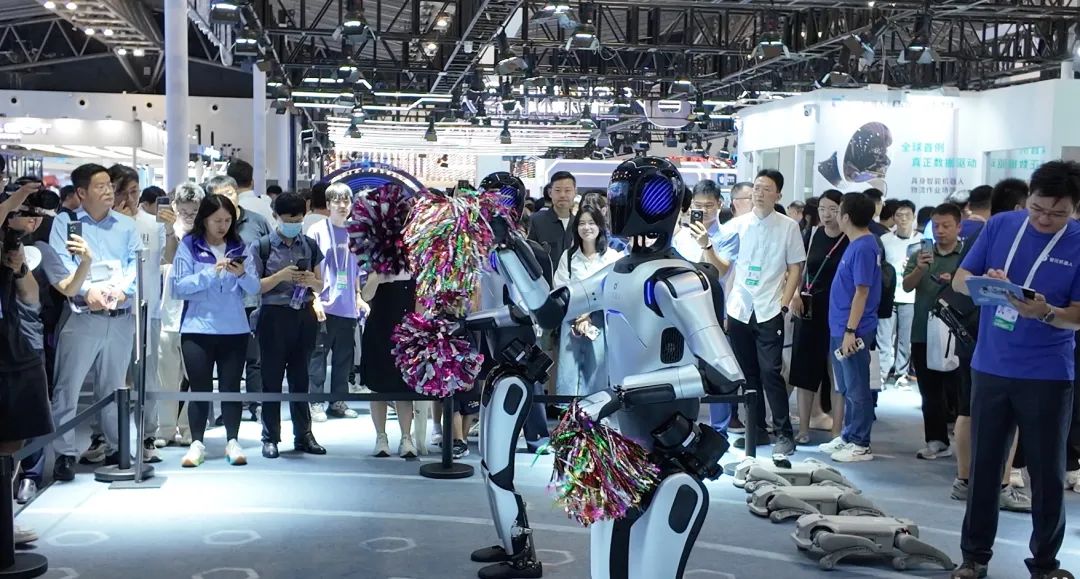
General Galaxy's general humanoid robot focuses on the dual paths of 'light industrial collaboration + scenario dialogue', suitable for logistics handling, park inspections, etc., seamlessly integrating model reasoning and industrial operation capabilities.
Qilang Intelligence specializes in commercial service robots for scenarios like meal delivery, cleaning, and distribution, with products already widely deployed in hotels, hospitals, and airports. By leveraging large models, these robots can perform emotion recognition, complex path judgment, and more.
Beyond robots, smart glasses have emerged as a novel terminal entry point.
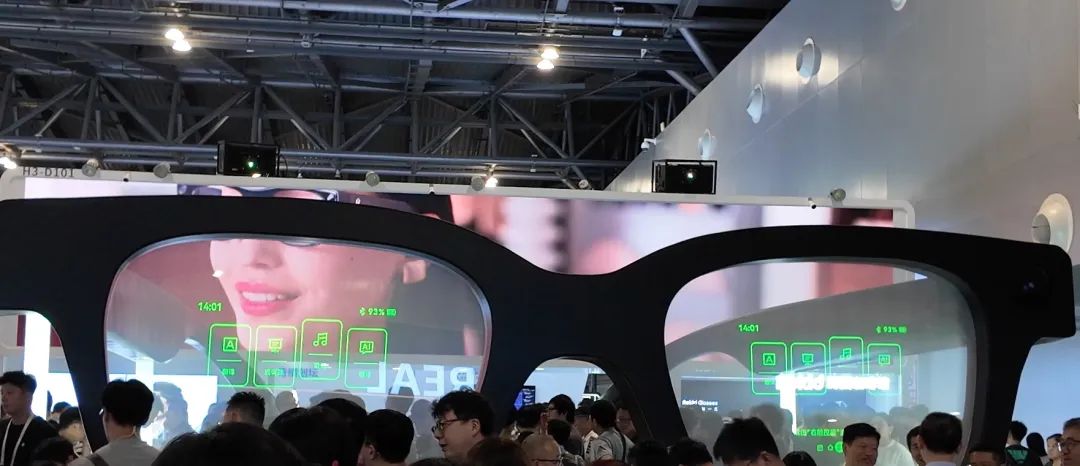
Rokid, XREAL, and numerous other manufacturers showcased smart glasses equipped with AR+AI functionalities, such as real-time multi-language translation, content overlay, remote collaboration control, and more. Huawei, in collaboration with third parties, launched new smart glasses integrated with the Pangu model, supporting local semantic recognition and experimental applications like "eye movement command," marking a fresh attempt to position AI as an "entry-level device".
At the Yangpu Meituan Comprehensive Command Center, one can also observe the intelligent service system built upon AI scheduling and drone delivery.
The rapid evolution of embodied intelligence and AI terminals underscores the redefinition of computational power and intelligence boundaries.
The logic behind this wave of intelligence driven by terminal hardware is straightforward: to make AI accessible, personalized, and responsive, becoming an integral part of the physical world. This represents an extension of AI infrastructure and the unleashing of its outward topological capabilities.
Perhaps in the near future, our genuine intelligent interaction entry point will not be an app but an AI glass, a household robot, or even a micro-sensing terminal embedded in your car's rearview mirror.
Closing Thoughts:
If past WAICs resembled exhibition stages for cutting-edge technology, the 2025 WAIC is a "blueprint" of AI integrating into the foundational structure of human society.

It illustrates that AI is no longer a conceptual, omnipresent engine but a series of tangibly perceptible system nodes. It can manifest as an office assistant, a manufacturing actuator, a city manager, a pair of glasses that comprehend your intentions, or even a conversational robot.
From large models to agents, from industry systems to embodied terminals, this WAIC unmistakably conveys a trend: AI has transformed from an external tool to an endogenous capability, shifting the focus from feasibility to excellence and ultimately to whether it has genuinely revolutionized production methods.
It is an assistant, but more crucially, a reconstructor.
WAIC 2025 is proclaiming to the world that the second half of the AI era has dawned.








